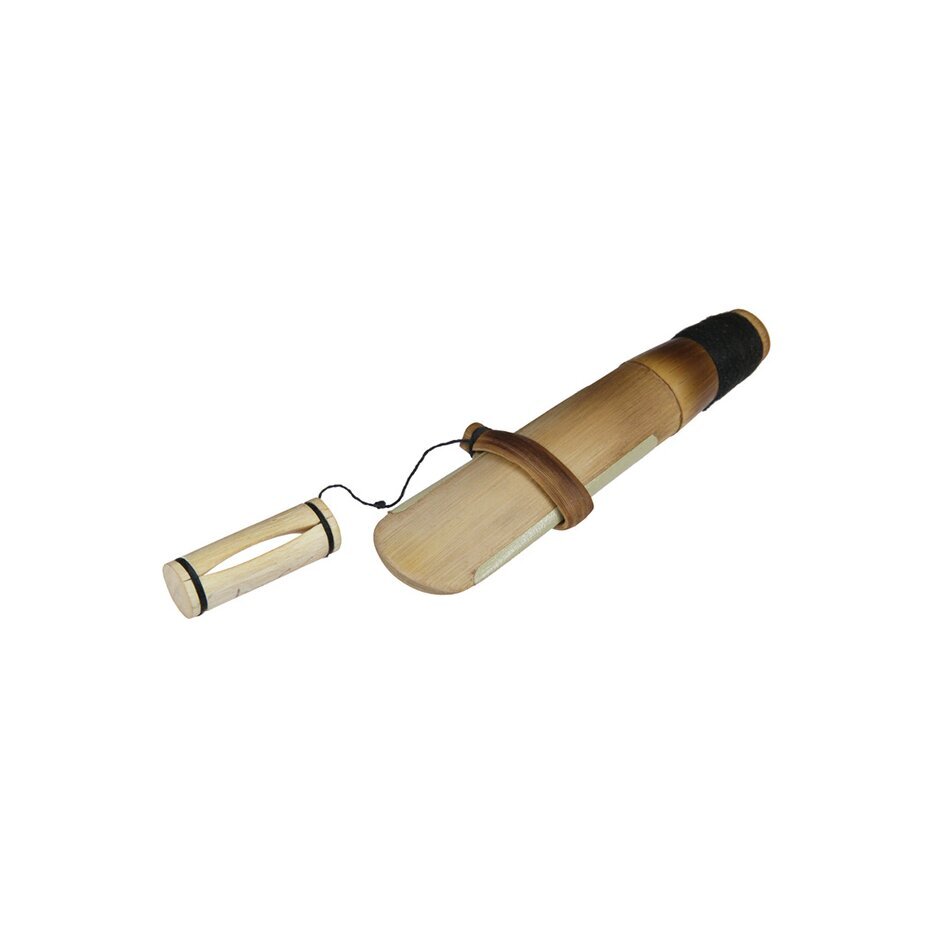Although the Duduk is well-known as an original Armenian instrument it has long been played all over the world. The Duduk does not only appear in Armenian folk and art music, it is also played more and more as a solo instrument in movies, world music and video game soundscapes.
The Duduk stands out with its unique sound, which appears sweetly smooth, nasal and melancholic all at the same time. In Armenia, the Duduk is played both at weddings and funerals, a fact that indicates how changeable the moods are that can be accompanied with the instrument. The reed mouth piece, known as the Ghamish, is mainly responsible for the particular sound of the Duduk. In comparison to other double reed instruments, such as the Oboe or the Zurna, the reed of the Duduk mouth piece is longer and broader. That is why the Duduk sounds much softer and similar in sound to a clarinet played in a low pitch.
The Duduk is a diatonic-tuned (major scale) instrument. Most of the instruments are built with 8 holes at the front and one at the back and have a range of a tenth. Playing a chromatic scale is possible with the help of finger techniques. Most commonly, instruments tuned to tone A are being played. Most Armenian musical notations are written for the Tenor A Duduk. The Duduk is also available in other sizes and tunings. There is for instance a Bass Duduk tuned in A for the low-pitched tones. The instruments are between 27 and 55 cm long, the reed excluded. Today the Duduk body is made from the wood of the apricot tree. Apricot wood best supports the unique sound of the Duduk. First the wood is getting boiled for a couple of days and then dried out over a number of years before it is further processed.
The mouthpiece/reed (Ghamish) is manufactured from a reed which in a very elaborate process is flattened on the sides into a double reed (ideal distance approx. 1.5 mm) and can be tightened or loosened by means of a wooden clamp. This allows a minimal correction of the pitch level of 1/4 of a note. The reeds are between 7.5 and 11 cm long and up to about 3 cm wide. The reeds are available in diverse strengths (light, medium and heavy). A wooden cap is part of the mouthpiece, which can be placed on the upper end of the Ghamish, in order to protect the reeds from damage.
The origins of the duduk have been proven to be in Armenia. The first instruments have been dated to about the year 500 AD. Other sources claim that the duduk already existed for many centuries BC. That the duduk is an instrument that is played by soloists is rather a modern phenomenon. In Armenian music the instruments are traditionally played in duos and in ensembles. An important feature are the roles in the ensemble: there usually is one Duduk played as bourdon/drone and the other plays the melody.
The worldwide awareness of the Duduk is inter alia the result the large Armenian diaspora. More than three-quarters of Armenians do not live in Armenia. This dramatic circumstance can be traced back to their history, which has been shaped by expulsion and persecution. Regardless of whether they live in Armenia or abroad, the Duduk and its sound connects many Armenians to the culture and history of Armenia. In 2005, the UNESCO declared the duduk and its music to be an object of Intangible Cultural Heritage.
Short documentation about the Duduk, published by the UNESCO
Several books on the musical and social aspects of the duduk have been published, many of them in the Armenian language. "The duduk and national identity in Armenia" by Andy Nercessian (2001) has been published in English.
If you are looking for some good instructions, have a look at "The Armenian Duduk: A Complete Guide" by (Dave Tawfik 2013). This is 164 pages full of information and instructions in English.
In the DAN MOI webshop you can find a selection of Duduks in a professional stage-proof quality in several tunings at a really good price-performance-ratio.
After a long period of testing we finally decided for one certain craftsman who reliably makes great instruments in a steadily high quality.
Most of the cheap Duduks and Ghamishes you can find on typical internet marketplaces are in a deflating souvernir quality only and are not suited for serious playing.



